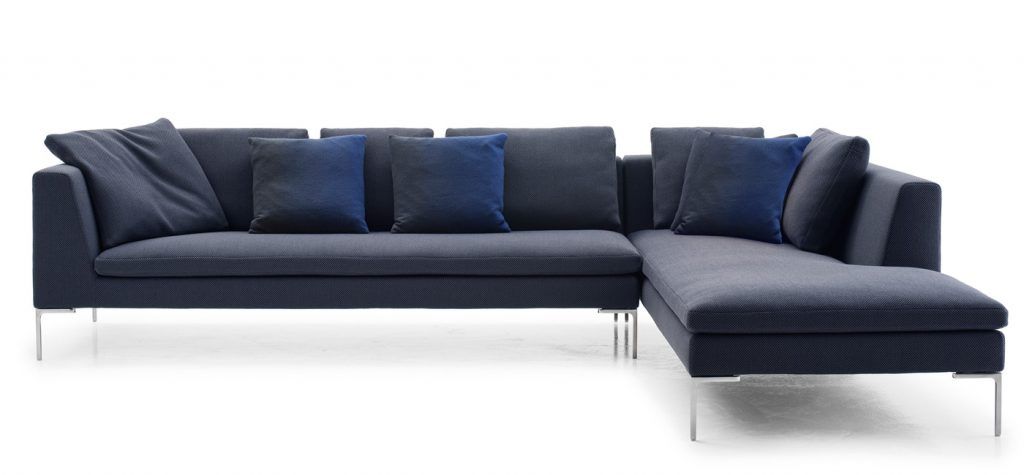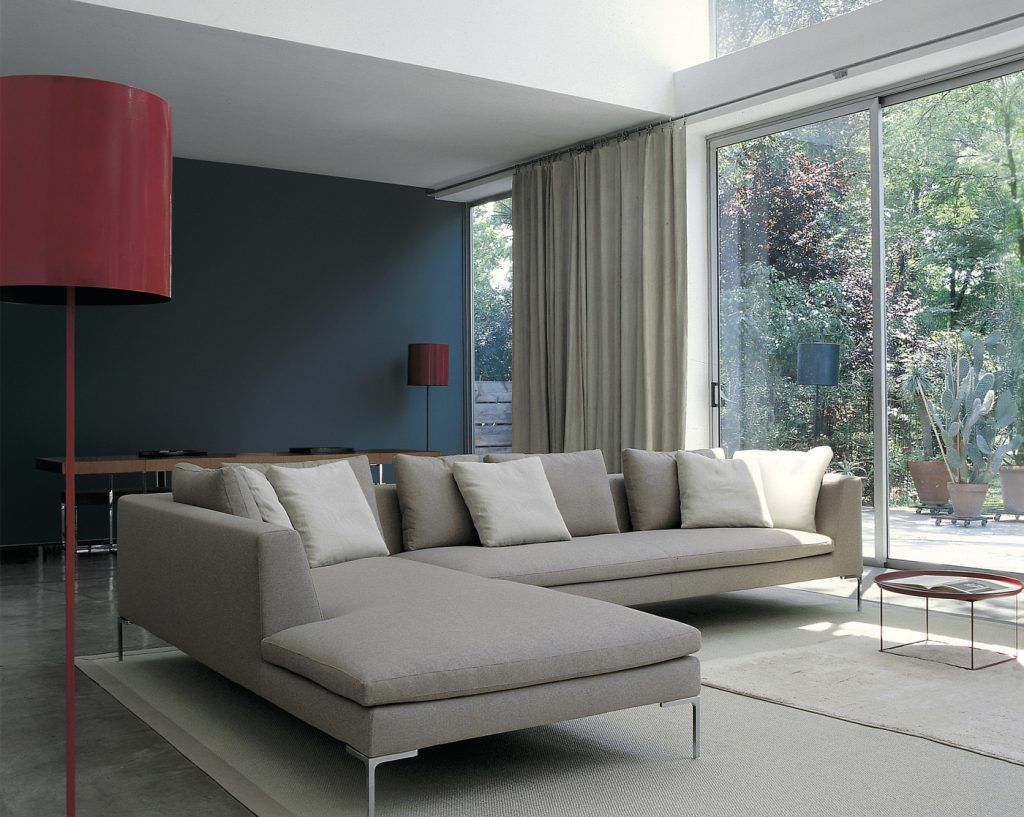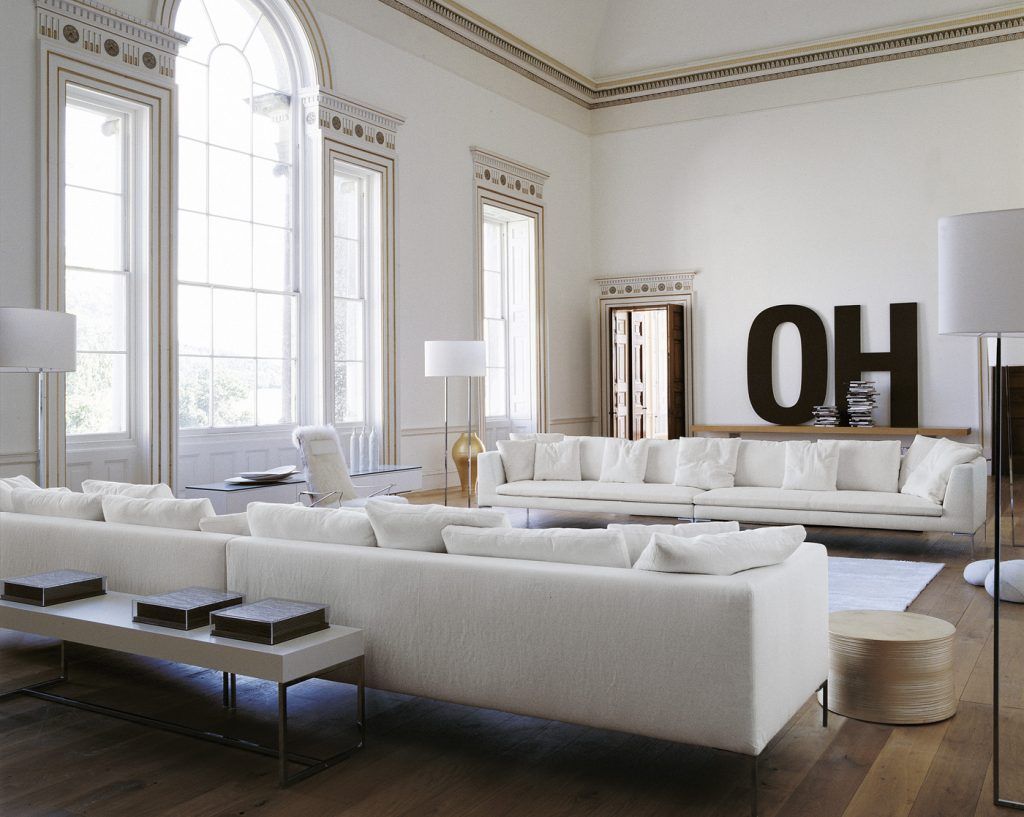Charles the First
After 40 years in the furniture and interiors business the one skill that I have learned which has been the most important to me is the ability to recognise whether a new design will become a furniture classic or will not.
A modern furniture classic has the features which will turn it into a highly prized investment piece for the future, behaving much like an art masterpiece and will bring joy and pleasure to the family who purchases it over several generations.

Having owned two Charles sofas, forming the centrepiece of my own home for eighteen years, I strongly believe that no furniture piece epitomises this value in iconic design better. Couch Potatoes everywhere can have good reason to celebrate. It’s the 20th anniversary of the Charles Sofa, a groundbreaking design that changed our lounging habits forever.
The Charles, an advanced continuation of previous sofa experiments by design maestro Antonio Citterio, proposed a new type of seating, made up of disconnected and flexible parts, translating the structure of comfort typical of the middle class home into the modern language of differentiated elements. In other words, we were no longer having our sitting and lounging dictated by the sofa and two matching armchairs. Instead of sitting upright in a row like airport or bus stop habitués, we could now lounge, work, put up our feet, watch a movie or have a nap.

In doing this, Antonio Citterio introduced the principle of the ‘island’ arrangement of seats into the living room, showing that it is possible to control the organisation of space through the design of the furniture. With so many parts to the system, with no preconceived ideas of having a sofa up against a wall or having sofas in a fixed location, the system gave consumers options for less restricted and more comfortable styles of living.
What are in effect, floating platforms in differing depths and breadths can create zones for conversation, areas of solitary contemplation and islands for relaxation. Citterio himself commented, ‘..the fact that sofas were longer, wider or narrower was not just a formal or marketing choice, but an interpretation of daily life in the home. The sofa is no longer a piece of furniture on which people sit just to chat; in contemporary society you sit on the sofa and at the same time talk, eat, watch television, write.’

The Charles satisfied the needs of a very broad section of the market – traditionalists still had the equivalent of seating for two or three people but had the option of integrating it with a chaise-longue. All the elements have removable leather or fabric covers while the supporting structure is made of steel sections clad in cold moulded polyurethane – a material that was introduced and refined for furniture use by B&B Italia.
With the Charles, named, incidentally, after Charles Eames, Antonio Citterio arrived at simpler lines than his previous designs. Consisting of fourteen elements, it was a development of the idea of the domestic landscape but reduced in form to a light, airy design that, if required, could enhance the most elegant of decors.
The Charles has been one of the most influential sofas. Aside from the high quality and innovation of B&B Italia’s manufacturing, the variety of elements and the design of the proportions, one small design element is crucial – the legs. A ‘three-way’ foot made of die-cast aluminium links up different components of the seat using a dedicated joint, but its main purpose is to give the elements a feeling of aerial stability, as if the Charles sofas, armchairs and chaise longues were floating on the air – thin, high legs supporting a large volume of cushions.

The Charles was such a success that the range has been expanded over the years – the distinctive legs can be seen on the low tables and beds plus there is the ‘Charles Large’ system and an outdoor range in which the distinctive shapes and modules of the Charles are replicated with the slim frame in aluminium with an interlaced brown polypropylene body.
To all my clients that I have recommended the Charles over the past 20 years it is time to celebrate and rejoice in the pleasure your Charles has brought to you, your friends and your family. You can also pay homage to a man who I consider to be my “God of Design” for producing such amazing highly successful design classics consistently for over 30 years.
So as you lounge about with your boxed sets, laptops and potato chips, raise a glass to Antonio Citterio and celebrate the 20th birthday of a sofa that has influenced the way that we have all worked and relaxed over the last two decades.
Alan Bertenshaw of Matisse International Design. Read his columns at M2now.co.nz. matisse.co.nz

